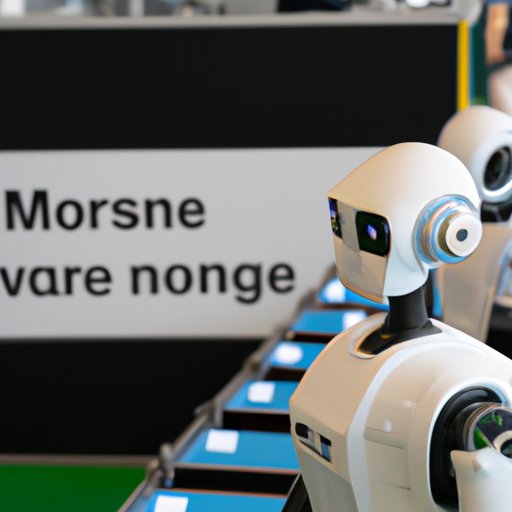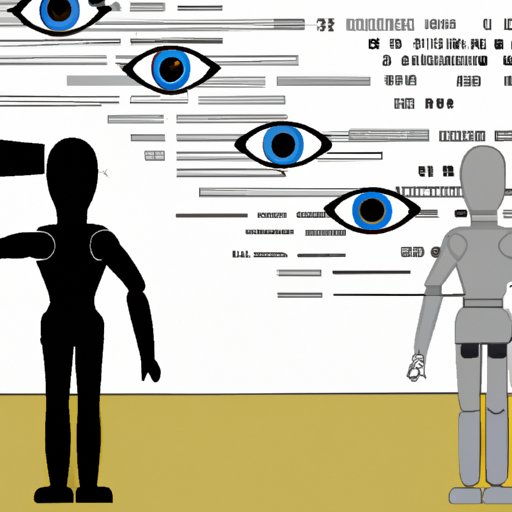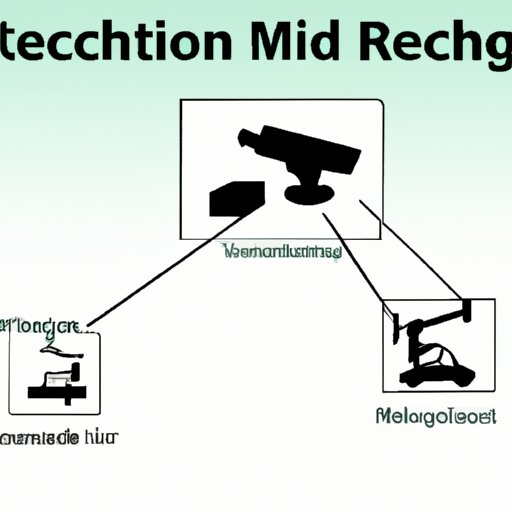Introduction
Robots are machines that are designed to carry out a variety of tasks autonomously. They can be programmed to complete specific tasks or to respond to their environment. The use of robots is widespread across many industrial and commercial settings, from manufacturing and production to healthcare and retail. As robots become increasingly complex and sophisticated, they are being equipped with the ability to “see” their surroundings. This article will explore how robots see and the technology behind robotic vision.
Exploring the Technology Behind Robotic Vision
Robotic vision is powered by a combination of artificial intelligence (AI), machine learning, and computer vision technologies. AI is the science of making machines smarter and more capable of performing tasks without direct human intervention. It involves using algorithms to enable robots to make decisions based on the data they collect. Machine learning is a subset of AI that enables robots to learn from their experience and improve their performance over time. Computer vision is the technology that enables robots to “see” and understand their environment. It involves analyzing images and recognizing patterns in order to identify objects and make decisions.
How Artificial Intelligence Powers Robotic Eyesight
Robots use AI to power their eyesight. AI enables robots to analyze images and recognize patterns in order to identify objects and make decisions. AI is used to train robots to recognize and classify objects. For example, AI can be used to train robots to identify a chair from other objects in an image. AI algorithms can also be used to detect motion and track objects in an image.
Understanding Image Recognition
Image recognition is a key component of robotic vision. Image recognition involves using algorithms to identify objects in an image. This can be done by analyzing the shape, color, size, or texture of the object. Image recognition can be used to enable robots to navigate their environment, identify objects, and interact with humans.

Using Machine Learning to Train Robots
Machine learning is used to enable robots to learn from their experience and improve their performance over time. Machine learning algorithms are used to teach robots to recognize objects, detect motion, and track objects in an image. By training robots with large datasets of images, they can become more accurate at recognizing objects and making decisions.

Investigating How Robots Process Visual Information
Robots process visual information by analyzing images and detecting patterns. They can use algorithms to identify objects in an image and to detect motion. For example, robots can use algorithms to identify a chair in an image or to detect a person moving in an image. Robots can also use algorithms to track objects in an image and to predict future movements.
Examining How Image Recognition Works in Robotics
Image recognition is used to enable robots to identify objects in an image. To do this, robots use cameras to capture images of their environment. They then apply algorithms to the images to identify objects and make decisions. Image recognition can be used to enable robots to recognize and classify objects, detect motion, and track objects in an image.

Understanding the Science of Machine Vision in Robotics
The science of machine vision in robotics involves leveraging sensor technology to enable robots to “see” their environment. Sensors such as cameras and infrared sensors are used to capture images of the environment. These images are then analyzed by algorithms to identify objects and make decisions. Machine learning algorithms are used to train robots to recognize objects and detect motion.
Conclusion
Robotic vision is enabled by a combination of artificial intelligence, machine learning, and computer vision technologies. AI algorithms are used to enable robots to recognize and classify objects, detect motion, and track objects in an image. Machine learning algorithms are used to train robots to recognize objects and detect motion. Sensor technology is used to capture images of the environment and enable robots to “see” their environment. In conclusion, robotic vision is an important technology that enables robots to interact with their environment and complete tasks autonomously.
(Note: Is this article not meeting your expectations? Do you have knowledge or insights to share? Unlock new opportunities and expand your reach by joining our authors team. Click Registration to join us and share your expertise with our readers.)
